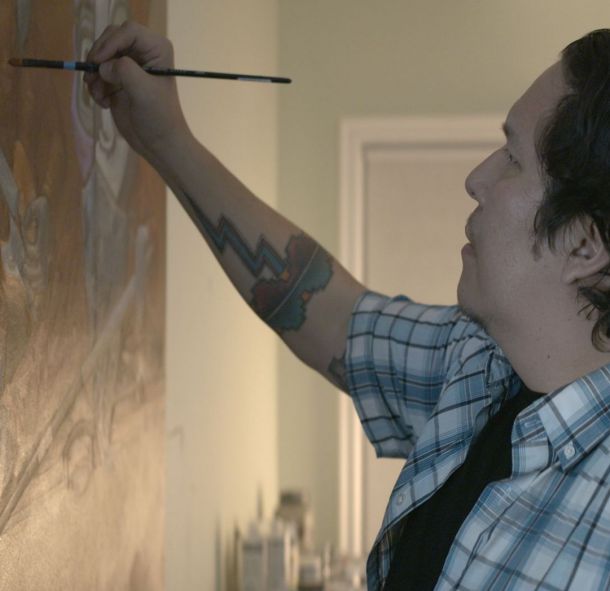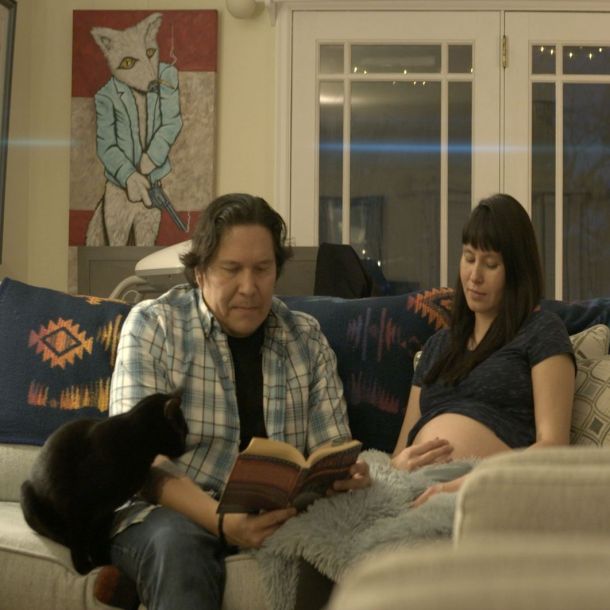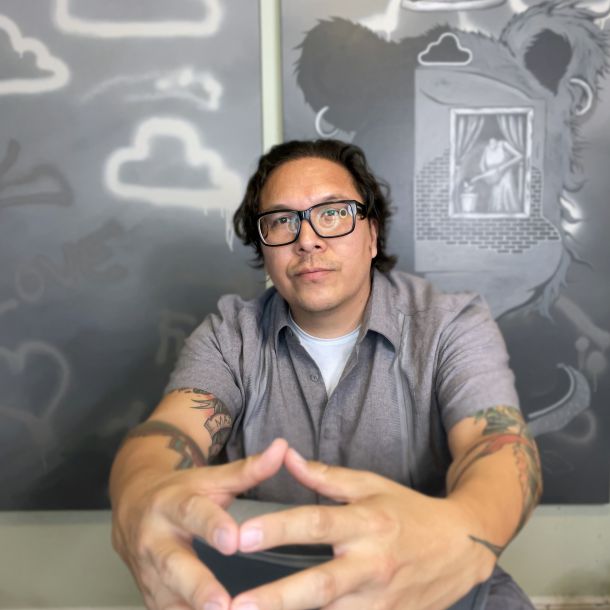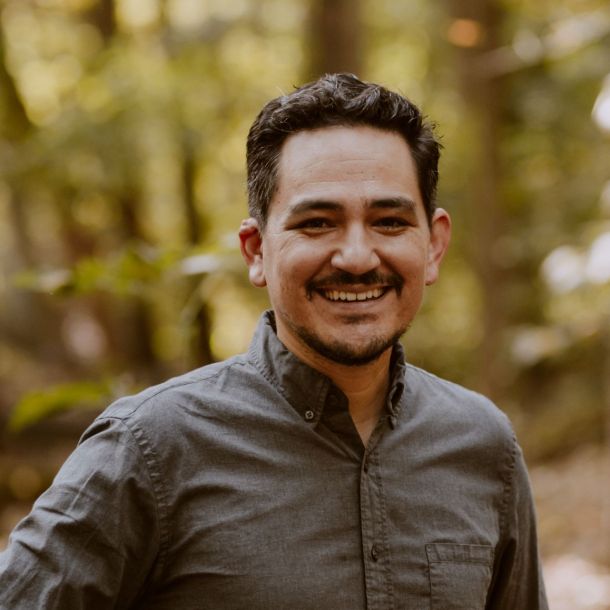Sergio Mata’u Rapu’s director statement
I first met Jonathan Thunder when we worked together on Leya Hale’s “Bring Her Home,” an hour-long PBS doc about the Missing and Murdered Indigenous Women epidemic.
As I got to know him more, I saw such a stark contrast between his warm calming demeanor and the evocative surrealist works that he created. In conversations I found shared similarities in our goals and struggles. As Indigenous men, storytellers and artists, we yearned to be seen beyond just our cultural identity and more so for our talents and skills. As fathers–a soon-to-be one in Jonathan’s case–there was this added sense of responsibility for guiding and protecting a new generation of youth in a seemingly bleak world.
I gained inspiration for crafting the visual style of the film through Jonathan’s work.
I wanted to live within many of his paintings and films, where Indigenaety played a small facet of a much larger complex world. In that world, great legends were killed, women were revered heroines, and we humans were part of nature, not separate from it. I worked with cinematographer Jeff Saunders to frame Jonathan using anamorphic lenses so as to elevate his real world into the realm of mythology. In working with Anishinaabe artist Moira Villiard, we also melded Jonathan’s own animations into his live action world, hoping to visually cement his pieces in reality. In that way, Gichigami (Lake Superior) also became a key character in the film. Its ice shards and frozen surface in the winter transitioned to the glimmering enriching lake in the summer, mimicking Jonathan’s own transition into fatherhood.
In the process of making this film, my own uncertainties around career, fatherhood, and being an indigenous man were validated through Jonathan’s own experiences.
Though our ancestry and upbringing were different, I felt great comfort in the fact our experiences and values were so similar. To that end, this film is as much about Jonathan’s journey, and my own, as it is about many indigenous fathers trying to be a present, positive force, for our families by grasping onto the fleeting connections to our culture and past.
About Jonathan Thunder
Jonathan Thunder infuses his personal lens with real-time world experiences using a wide range of mediums. He is known for his surreal paintings, digitally animated films and installations in which he addresses subject matter of personal experience and social commentary. Thunder is an enrolled member of the Red Lake Band of Ojibwe, and makes his home and studio in Duluth, MN.
He has attended the Institute of American Indian Arts (IAIA) in Santa Fe, NM and studied Visual Effects and Motion Graphics in Minneapolis, MN at the Art Institute International. His work has been featured in many states, regional and national exhibitions, as well as in local and international publications. Thunder is the recipient of a 2020-21 Pollock – Krasner Foundation Award for his risk taking in painting. Since his first solo exhibit in 2004, he has won several awards for his short films in national and international competitions. His painting and digital works are in the permanent collections of multiple museums and universities.
About filmmaker Sergio Mata’u Rapu
Sergio Rapu is a documentary filmmaker native to Rapa Nui (Easter Island). His content priorities are in uplifting under-represented voices and telling stories around environmental conservation.
His award-winning directorial debut, “Eating Up Easter,” was screened around the world and broadcast on PBS’s Independent Lens in 2020. In 2021 he produced and edited “Bring Her Home,” the latest feature by director Leya Hale (Dakota/Dine) which follows three Indigenous women as they work to vindicate and honor their missing and murdered relatives who are victims in the growing epidemic of Missing and Murdered Indigenous Women. Rapu also developed and produced “That Got Weird,” an animated digital series about racism and microaggressions.
As one of the only native Rapanui working in documentary film, he seeks to uplift under-represented voices and create thought-provoking media around environmental conservation.

















